Home> Company News> The Basics of 2-Stage Hydraulic Pump Adjustment: Techniques for Optimal Performance
- AddressNorth Tan Street, Jinan,Shandong
- Factory Address123 Ubi Ave 3 #12-30 Frontier Singapore 408867
- Worktime9:00-18:00(Beijing time)
- Phone(Working Time)86 0531-8299 9952
The Basics of 2-Stage Hydraulic Pump Adjustment: Techniques for Optimal Performance
NOVEMBER 02, 2022Understanding 2-Stage Hydraulic Pumps: An Overview of How They Work
Hydraulic pumps are essential components of hydraulic systems, and they are responsible for converting mechanical energy into hydraulic energy. This energy is then used to power various types of machinery and equipment, including excavators, cranes, and bulldozers. 2-stage hydraulic pumps are a specific type of hydraulic pump that are widely used in the construction and agricultural industries.
A 2-stage hydraulic pump is designed with two separate pumping chambers or stages. The first stage of the pump is responsible for producing high pressure and low flow, while the second stage produces lower pressure and higher flow. The two stages are connected in series, meaning that the output of the first stage feeds into the second stage. This design allows the pump to produce high pressure and high flow rates, making it ideal for heavy-duty applications.
Compared to single-stage hydraulic pumps, 2-stage pumps are capable of producing higher pressures and flow rates. This is due to the fact that the two stages work in tandem, with the output of the first stage feeding into the second stage. As a result, 2-stage pumps are better suited for applications that require high power and high speed, such as earthmoving equipment and agricultural machinery.
It is important to note that 2-stage hydraulic pumps are not always the best choice for every application. While they are ideal for heavy-duty applications that require high power and high speed, they may not be the best choice for applications that require precise control over the flow rate and pressure. In these cases, a variable-displacement hydraulic pump may be a better choice.
In summary, 2-stage hydraulic pumps are an important component of hydraulic systems used in heavy-duty applications such as construction and agriculture. They are capable of producing high pressure and high flow rates, making them ideal for applications that require high power and high speed. However, they may not be the best choice for applications that require precise control over the flow rate and pressure.
Factors to Consider When Adjusting a 2-Stage Hydraulic Pump
A 2-stage hydraulic pump is designed to deliver high pressure and high flow rate, making it ideal for heavy-duty applications that require the power and efficiency of a multi-stage pump. However, like any other hydraulic pump, it may require adjustments from time to time to maintain optimal performance. There are several factors to consider when adjusting a 2-stage hydraulic pump, including:
-
Reason for Adjustment: The first step in adjusting a 2-stage hydraulic pump is to determine the reason for the adjustment. The most common reasons for adjustment include changes in the load, changes in the fluid viscosity, and wear and tear of the pump components. It is important to identify the underlying cause of the performance issue to make the appropriate adjustment.
-
Types of Adjustments: There are two types of adjustments that can be made to a 2-stage hydraulic pump: pressure adjustment and flow adjustment. Pressure adjustment involves changing the pressure settings on the pump, while flow adjustment involves adjusting the flow rate. The type of adjustment required will depend on the performance issue and the manufacturer's recommendations.
-
Manufacturer Guidelines: It is important to follow the manufacturer's guidelines when adjusting a 2-stage hydraulic pump. The manufacturer will provide specific instructions on how to make adjustments and the recommended settings. Deviating from these guidelines may result in decreased performance or damage to the pump.
-
Impact on Performance: Adjusting a 2-stage hydraulic pump can have a significant impact on its performance. It is important to understand how the adjustments will affect the pump's output and efficiency. Making improper adjustments can cause damage to the pump and decrease its lifespan.
-
Environmental Factors: Environmental factors, such as temperature and humidity, can affect the performance of a 2-stage hydraulic pump. When making adjustments, it is important to consider these factors and make appropriate adjustments to ensure optimal performance under the given conditions.
By considering these factors, operators can make informed decisions when adjusting a 2-stage hydraulic pump, ensuring that the pump operates at optimal levels of performance and efficiency.
Techniques for Adjusting a 2-Stage Hydraulic Pump
Proper adjustment of a 2-stage hydraulic pump can significantly impact its performance and efficiency. However, adjustments should only be made by trained professionals with the proper tools and equipment to ensure that they are done safely and accurately.
Here are some techniques for adjusting a 2-stage hydraulic pump:
-
Understand the manufacturer specifications: Before adjusting the pump, it is essential to understand the manufacturer's specifications and guidelines. These specifications outline the recommended adjustments and tolerances for the pump. It is crucial to follow these guidelines to avoid damaging the pump or affecting its performance negatively.
-
Use the proper tools and equipment: To adjust a 2-stage hydraulic pump, it is necessary to have the proper tools and equipment. These may include a pressure gauge, wrenches, a flow meter, and other specialized tools. Using the wrong tools or equipment can cause damage to the pump or result in inaccurate adjustments.
-
Test the pump: Before making any adjustments, it is important to test the pump to establish a baseline for its performance. Testing the pump involves checking its pressure, flow rate, and other parameters. This baseline will provide a reference point for comparing the pump's performance after adjustments.
-
Adjust the pressure relief valve: The pressure relief valve is one of the essential components of a 2-stage hydraulic pump. Adjusting this valve can help regulate the pump's pressure and performance. To adjust the valve, turn it clockwise to increase the pressure or counterclockwise to decrease it.
-
Adjust the flow control valve: The flow control valve regulates the flow rate of hydraulic fluid through the pump. Adjusting this valve can impact the pump's performance and efficiency. To adjust the valve, turn it clockwise to decrease the flow rate or counterclockwise to increase it.
-
Check the adjustments: After making adjustments, it is crucial to test the pump again to ensure that the adjustments were successful. Testing the pump involves checking its pressure, flow rate, and other parameters to confirm that they meet the manufacturer's specifications.
In conclusion, adjusting a 2-stage hydraulic pump requires expertise, experience, and the right tools and equipment. Improper adjustments can lead to damage to the pump, reduced performance, and even safety hazards. It is recommended to have a trained professional perform adjustments to ensure that they are done correctly and safely.
Common Issues and Troubleshooting for 2-Stage Hydraulic Pumps
Even with regular maintenance and proper adjustment, 2-stage hydraulic pumps can encounter common issues that affect their performance. Understanding these issues and their causes can help in diagnosing and resolving problems quickly to prevent downtime and costly repairs.
Symptoms of Common Problems and Their Causes
Insufficient Flow or Pressure
One of the most common issues with 2-stage hydraulic pumps is insufficient flow or pressure. This can be caused by a variety of factors, including:
- Leaks in the hydraulic system, such as damaged hoses, fittings, or seals
- Worn or damaged pump components, such as the gears or bearings
- Restrictions in the hydraulic system, such as clogged filters or improperly adjusted relief valves
- Insufficient power supply to the pump, such as a worn or damaged drive motor
Overheating
Overheating can also be a problem with 2-stage hydraulic pumps, which can be caused by:
- Excessive load on the hydraulic system, such as overloading or improper use of the equipment
- Inadequate cooling or ventilation, such as a dirty or damaged heat exchanger or blocked air intake
- Improper adjustment or calibration of the pump, such as excessive pressure or flow rates
Excessive Noise or Vibration
Excessive noise or vibration from the hydraulic system can indicate a problem with the 2-stage pump, such as:
- Worn or damaged pump components, such as the gears or bearings
- Misaligned pump components, such as the drive shaft or couplings
- Air in the hydraulic system, such as due to low fluid levels or improper bleeding of the system
Diagnostic Techniques and Tools
To diagnose and resolve common problems with 2-stage hydraulic pumps, various diagnostic techniques and tools can be used, including:
Pressure and Flow Testing
Pressure and flow testing can help determine if the hydraulic pump is operating within manufacturer specifications, and identify any issues with the pump or hydraulic system that could be affecting performance.
Visual Inspection
Visual inspection can help identify leaks, damaged components, or misalignments that could be causing problems with the hydraulic pump.
Vibration Analysis
Vibration analysis can help detect issues with the pump's bearings, gears, or other components that could be causing excessive noise or vibration.
Temperature Monitoring
Temperature monitoring can help detect issues with the pump's cooling or ventilation system, and identify any overheating issues that could be affecting performance.
Solutions and Repairs for Common Issues
Depending on the cause of the problem, there are various solutions and repairs that can be done to resolve common issues with 2-stage hydraulic pumps, including:
- Repairing or replacing damaged components, such as hoses, fittings, or seals
- Adjusting or replacing the relief valve to ensure proper pressure and flow rates
- Cleaning or replacing clogged filters or heat exchangers
- Realigning misaligned components or replacing worn or damaged gears or bearings
It is important to consult the manufacturer's guidelines and specifications when attempting any repairs or adjustments to ensure proper procedures are followed and to prevent further damage to the hydraulic system. In some cases, it may be necessary to seek the assistance of a professional hydraulic technician to diagnose and resolve issues with the 2-stage hydraulic pump.
Best Practices for Maintaining 2-Stage Hydraulic Pumps
Proper maintenance is crucial for keeping 2-stage hydraulic pumps functioning at their peak performance. Neglecting maintenance can lead to reduced efficiency, increased wear and tear, and even failure of the pump. In this section, we will discuss some best practices for maintaining 2-stage hydraulic pumps.
Importance of Regular Maintenance
Regular maintenance is essential for ensuring the longevity and efficiency of 2-stage hydraulic pumps. Routine inspections and servicing can help detect any issues early on and prevent costly repairs or replacements down the line. It is recommended to perform maintenance checks on a regular basis, depending on the frequency and intensity of use.
Recommended Maintenance Schedule
The maintenance schedule for a 2-stage hydraulic pump may vary depending on the manufacturer's recommendations and the specific application. However, some general guidelines for maintenance may include:
- Daily checks: Inspect the pump for any leaks, unusual noises, or vibrations. Check the fluid level and condition, and ensure that the filters are clean.
- Weekly checks: Inspect the hoses and fittings for any signs of damage or wear. Tighten any loose connections.
- Monthly checks: Change the hydraulic fluid and filters. Inspect the pump for any signs of wear and tear or damage. Lubricate any moving parts as needed.
- Quarterly checks: Inspect the valves and cylinders for any signs of wear or damage. Check the pump's pressure settings and adjust as necessary.
- Yearly checks: Perform a complete overhaul of the pump, replacing any worn or damaged parts and cleaning all components.
It is important to refer to the manufacturer's guidelines and recommendations for maintenance and servicing to ensure proper upkeep of the 2-stage hydraulic pump.
Tips for Keeping a 2-Stage Pump Operating at Peak Performance
In addition to regular maintenance, there are some best practices for operating and maintaining a 2-stage hydraulic pump to keep it functioning at its best:
- Use the correct type of hydraulic fluid and ensure that it is the proper grade and viscosity for the specific application.
- Keep the pump clean and free of debris or contaminants that could damage the internal components.
- Avoid overloading or operating the pump outside of its recommended range or capacity.
- Monitor the pump's performance and pressure levels regularly to detect any issues early on.
- Train operators and maintenance personnel on the proper use and maintenance of the pump to ensure optimal performance.
By following these best practices for maintenance and operation, 2-stage hydraulic pumps can remain reliable and efficient for a long time.
Safety Precautions When Adjusting or Maintaining Hydraulic Pumps
When working with hydraulic pumps, safety should be a top priority. There are several hazards associated with hydraulic pump maintenance and adjustment, such as exposure to high pressure fluids, electrical hazards, and other safety risks. Here are some safety precautions to keep in mind:
-
Hazard awareness and identification: Before beginning any work, it's essential to identify potential hazards in the workplace and take steps to eliminate or mitigate them. Hazards can include sharp objects, slippery floors, and electrical equipment, among others.
-
Proper use of personal protective equipment (PPE): Personal protective equipment such as safety glasses, gloves, and hard hats should be worn at all times when working with hydraulic pumps. These items can help protect against eye and hand injuries, as well as head injuries.
-
Safe work practices for hydraulic pump maintenance and adjustment: When working with hydraulic pumps, it's important to follow safe work practices to prevent accidents. Examples of these practices include using appropriate tools and equipment, securing the hydraulic pump before beginning work, and ensuring that the area is well-lit and well-ventilated.
It's also essential to follow proper lockout/tag-out procedures when working with hydraulic pumps. This involves disconnecting the power source, such as electricity or compressed air, and locking the control valve to prevent unintentional activation.
In conclusion, safety should always be a top priority when working with hydraulic pumps. By following proper safety procedures and using the appropriate equipment, you can help prevent accidents and ensure that everyone stays safe.
Applications and Industries That Benefit from 2-Stage Hydraulic Pumps
2-stage hydraulic pumps are used in a wide range of applications and industries. The benefits of using 2-stage pumps, such as improved efficiency and power output, make them a popular choice for a variety of machinery and equipment.
One of the most common applications of 2-stage hydraulic pumps is in construction equipment, such as excavators, backhoes, and bulldozers. These machines require high power output and fast cycle times, which can be achieved with the use of 2-stage pumps. Other industries that commonly use 2-stage hydraulic pumps include agriculture, mining, forestry, and material handling.
In the agriculture industry, 2-stage pumps are used in tractors and other equipment for tasks such as plowing, tilling, and harvesting. The improved efficiency and power output of 2-stage pumps help to increase productivity and reduce operating costs.
Mining and forestry operations also rely on the power and efficiency of 2-stage hydraulic pumps. In mining, these pumps are used in equipment such as excavators and haul trucks to move large amounts of material quickly and efficiently. In forestry, 2-stage pumps are used in equipment such as log loaders and skidders to move and process logs.
Material handling equipment, such as forklifts and cranes, also benefit from the use of 2-stage hydraulic pumps. These pumps provide the power and precision needed to move heavy loads and complete tasks quickly and efficiently.
Overall, 2-stage hydraulic pumps are a versatile and reliable choice for a wide range of applications and industries. Their improved efficiency and power output make them a popular choice for machinery and equipment that requires high performance and reliability.
Comparing 2-Stage Hydraulic Pumps to Other Pump Types
There are several different types of hydraulic pumps available on the market, each with their own unique features and advantages. Understanding the differences between these different pump types can help you make an informed decision when selecting a pump for your specific application. In this section, we will compare 2-stage hydraulic pumps to single-stage and variable-displacement pumps, two other common types of hydraulic pumps.
Single-Stage Hydraulic Pumps
Single-stage hydraulic pumps are the simplest type of hydraulic pump, with only one set of gears or pistons to create hydraulic pressure. They are often used in low-pressure applications or where precise pressure control is not necessary. Here are some key differences between single-stage and 2-stage hydraulic pumps:
- Efficiency: Single-stage pumps are generally less efficient than 2-stage pumps, as they have a lower volumetric efficiency and cannot create as high of pressures.
- Pressure Control: Single-stage pumps do not have as precise pressure control as 2-stage pumps, which can be a disadvantage in some applications.
- Cost: Single-stage pumps are typically less expensive than 2-stage pumps, making them a popular choice for low-budget applications.
Variable-Displacement Hydraulic Pumps
Variable-displacement hydraulic pumps are designed to adjust the flow of hydraulic fluid based on the load demand of the system. They are often used in high-performance applications where precise pressure and flow control is necessary. Here are some key differences between variable-displacement and 2-stage hydraulic pumps:
- Efficiency: Variable-displacement pumps can be more efficient than 2-stage pumps, as they can adjust the flow of fluid to match the system demand and reduce wasted energy.
- Control: Variable-displacement pumps offer greater control over the hydraulic system, allowing for precise pressure and flow control.
- Cost: Variable-displacement pumps are typically more expensive than 2-stage pumps, which can make them less attractive for low-budget applications.
Benefits and Drawbacks of Each Pump Type
Each type of hydraulic pump has its own unique benefits and drawbacks, which can make selecting the right pump for your application a complex decision. Here is a summary of the benefits and drawbacks of each pump type:
- 2-Stage Hydraulic Pumps: 2-stage pumps offer good efficiency, reliable pressure control, and are often less expensive than variable-displacement pumps. However, they may not offer the same precision and control as variable-displacement pumps, and may not be suitable for high-performance applications.
- Single-Stage Hydraulic Pumps: Single-stage pumps are simple, low-cost, and reliable. However, they may not offer the same pressure and flow control as 2-stage or variable-displacement pumps, and may not be suitable for high-pressure applications.
- Variable-Displacement Hydraulic Pumps: Variable-displacement pumps offer excellent control and efficiency, making them ideal for high-performance applications. However, they are often more expensive than 2-stage or single-stage pumps, and may be more complex to operate and maintain.
Ultimately, the right hydraulic pump for your application will depend on a variety of factors, including the specific performance requirements of your machinery, the available budget, and the desired level of control and precision. By understanding the differences between these different pump types, you can make an informed decision and select the best pump for your needs.


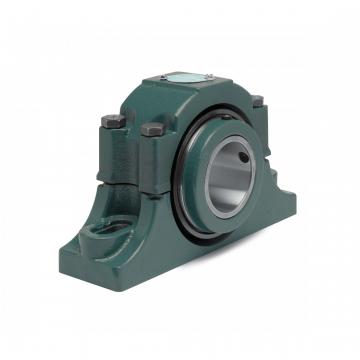 Mounted Tapered Roller Bearings P4B-EXL-212RE
Mounted Tapered Roller Bearings P4B-EXL-212RE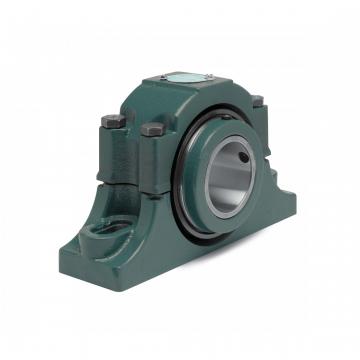 Mounted Tapered Roller Bearings P4B-EXL-400R
Mounted Tapered Roller Bearings P4B-EXL-400R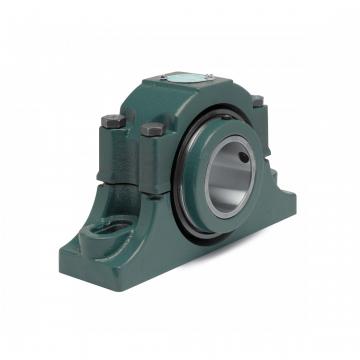 Mounted Tapered Roller Bearings P4B-EXL-400RE
Mounted Tapered Roller Bearings P4B-EXL-400RE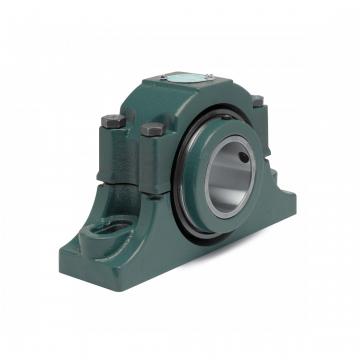 Mounted Tapered Roller Bearings P4B-EXL-315RE
Mounted Tapered Roller Bearings P4B-EXL-315RE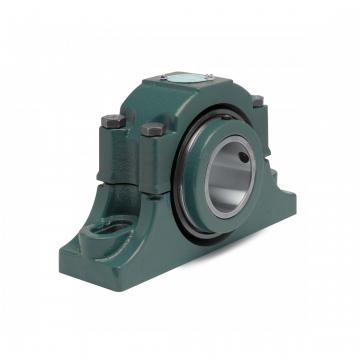 Mounted Tapered Roller Bearings P4B-EXL-207RE
Mounted Tapered Roller Bearings P4B-EXL-207RE